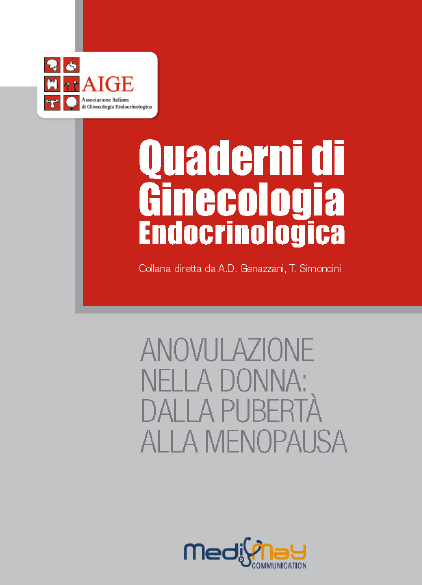-
Kristin Holvik, Natasja M van Schoor, Elisabeth M W Eekhoff, Martin den Heijer, Dorly J H Deeg, Paul Lips, Renate de Jongh
Plasma osteocalcin levels as a predictor of cardiovascular disease in older men and women: a population-based cohort study
Eur J Endocrinol 2014, 171 (2) 161-170Abstract
Objective Isolated GH deficiency (IGHD) could provide a model to investigate the influence of GH deficiency per se and the effect of GH replacement therapy without the influence from other pituitary hormone deficiencies or their treatment. The aim of this study is to address the questions about differences between IGHD and multiple pituitary hormone deficiencies (MPHDs) in clinical presentation and in responsiveness to GH treatment.
Design A nationwide surveillance study was carried out to describe the difference in the clinical presentation and responsiveness to GH treatment of patients with IGHD and MPHDs.
Methods The Dutch National Registry of GH Treatment in Adults was founded in 1998 to gain more insight into long-term efficacy and safety of GH therapy. Out of 2891 enrolled patients, 266 patients with IGHD at the start of GH treatment were identified and compared with 310 patients with MPHDs. Cardiovascular indices will be investigated at baseline and during long-term follow-up, including body composition, lipid profile, glucose metabolism, blood pressure, and morbidity.
Results Patients with IGHD and MPHDs were demonstrated to be different entities at clinical presentation. Metabolically, patients with MPHDs had a larger waist circumference, lower HDL cholesterol level, and higher triglyceride level. The effect of GH treatment was comparable between patient groups. GH seems to protect against rising lipid levels and blood pressure, even after excluding patients using corresponding concomitant medication. The risk for cardiovascular disease or diabetes mellitus during follow-up was not different between patients with IGHD and MPHDs.
Conclusions Patients with IGHD had a less impaired metabolic profile than patients with MPHDs at baseline. Influence of other pituitary hormone replacement therapies on the effect of GH treatment is not demonstrated. -
Annenienke C van de Ven, Romana T Netea-Maier, Femmie de Vegt, H Alec Ross, Fred C G J Sweep, Lambertus A Kiemeney, Johannes W Smit, Ad R Hermus, Martin den Heijera
Associations between thyroid function and mortality: the influence of age
Eur J Endocrinol 2014, 171 (2) 183-191Abstract
Objective The aim of this study was to investigate the influence of age on the association between thyroid function and mortality.
Design The Nijmegen Biomedical Study is a population-based study, comprising 5816 randomly selected adults of all age groups without previously known thyroid disease.
Methods TSH, free thyroxine (FT4) and peroxidase antibodies were measured in 2002–2003. The number of deaths were established in 2012 (median follow-up time 9.4 years).
Results Subclinical thyrotoxicosis was associated with mortality in subjects aged <65 years (hazard ratio (HR) 2.5, 95% CI 1.1–5.7), but not in subjects aged >65 years. As for thyroid function within the normal range: in the 493 participants aged 80 years or older, an FT4 level in the high-normal range (18.5–22 pmol/l) was associated with a higher mortality in comparison with FT4 levels in the middle range (11.5–15.0 pmol/l): HR 1.7 (95% CI 1.0–2.9). In these elderly, TSH levels within the high-normal range (3.0–4.0 mIU/l) were also associated with a higher mortality in comparison with TSH levels within the middle range (1.0–2.0 mIU/l): HR 1.8 (95% CI 1.0–3.1).
Conclusions The relationship between thyroid function and mortality differs according to age. This finding might (partially) explain the discrepant results of previous studies examining the relationship between thyroid function and mortality in different age groups. -
Andrea Morciano, Federica Romani, Francesca Sagnella, Elisa Scarinci, Carola Palla, Francesca Moro, Anna Tropea, Caterina Policola, Silvia Della Casa, Maurizio Guido, Antonio Lanzone, Rosanna Apa
Assessment of insulin resistance in lean women with polycystic ovary syndrome
Fertil Steril_2014;102:250–6Abstract
Objective: To develop and validate a specific simple measure of insulin sensitivity using oral glucose tolerance test (OGTT) values for
lean polycystic ovary syndrome (PCOS) women.
Design: Retrospective study.
Setting: Gynecologic Outpatient Clinic of University Hospital, affiliated with Unit of Gynecologic Endocrinology.
Patient(s): Totals of 201 lean and 198 overweight/obese (ov-ob) nondiabetic PCOS patients were retrospectively selected.
Intervention(s): None.
Main Outcome Measure(s): All patients underwent OGTT, euglycemic-hyperinsulinemic clamp, and androgenic and biochemical assays. The predictive performance of each insulin resistance (IR) index was analyzed with the use of receiver operating characteristic (ROC) curves.
Result(s): Higher correlation coefficients with clamp studies were obtained with the Belfiore Area (RS = 0.579) and the homeostasis model assessment (HOMA)-M120 (RS = -0.576) in lean PCOS patients and with the Sib (RS = 0.697) in ov-ob PCOS patients. The best predictive index of IR in lean PCOS was a HOMA-M120 value of >12.8 or more (area under the ROC curve [AUC] 92.4%). In the ov-ob PCOS population, the best predictive performance was obtained by a Sib of ≤10.2 or less (AUC 85.7%).
Conclusion(s): IR should be assessed in all PCOS women, both lean and ov-ob subjects. The HOMA-M120 resulted as a very simple tool, validated specifically for the lean PCOS woman whose cardiometabolic impairment is more frequently misunderstood. -
Frank J. Broekmans, Pierre J.M. Verweij, Marinus J.C. Eijkemans, Bernadette M.J.L. Mannaerts, Han Witjes
Prognostic models for high and low ovarian responses in controlled ovarian stimulation using a GnRH antagonist protocol
Hum. Reprod. (2014) 29 (8): 1688-1697Abstract
STUDY QUESTION Can predictors of low and high ovarian responses be identified in patients undergoing controlled ovarian stimulation (COS) in a GnRH antagonist protocol?
SUMMARY ANSWER Common prognostic factors for high and low ovarian responses were female age, antral follicle count (AFC) and basal serum FSH and LH.
WHAT IS KNOWN ALREADY Predictors of ovarian response have been identified in GnRH agonist protocols. With the introduction of GnRH antagonists to prevent premature LH rises during COS, and the gradual shift in use of long GnRH agonist to short GnRH antagonist protocols, there is a need for data on the predictability of ovarian response in GnRH antagonist cycles.
STUDY DESIGN, SIZE, DURATION A retrospective analysis of data from the Engage trial and validation with the Xpect trial. Prognostic models were constructed for high (>18 oocytes retrieved) and low (<6 oocytes retrieved) ovarian response. Model building was based on the recombinant FSH (rFSH) arm (n = 747) of the Engage trial. Multivariable logistic regression models were constructed in a stepwise fashion (P < 0.15 for entry). Validation based on calibration was performed in patients with equivalent treatment (n = 199) in the Xpect trial.
PARTICIPANTS/MATERIALS, SETTING, METHODS Infertile women with an indication for COS prior to IVF. The Engage and Xpect trials included patients of similar ethnic origins from North America and Europe who had regular menstrual cycles. The main causes of infertility were male factor, tubal factor and endometriosis.
MAIN RESULTS AND THE ROLE OF CHANCE In the Engage trial, 18.3% of patients had a high and 12.7% had a low ovarian response. Age, AFC, serum FSH and serum LH at stimulation Day 1 were prognostic for both high and low ovarian responses. Higher AFC and LH were associated with an increased chance of high ovarian response. Older age and higher FSH correlated with an increased chance of low ovarian response. Region (North America/Europe) and BMI were prognostic for high ovarian response, and serum estradiol at stimulation Day 1 was associated with low ovarian response. The area under the receiver operating characteristic (ROC) curve (AUC) for the model for a high ovarian response was 0.82. Sensitivity and specificity were 0.82 and 0.73; positive and negative predictive values were 0.40 and 0.95, respectively. The AUC for the model for a low ovarian response was 0.80. Sensitivity and specificity were 0.77 and 0.73, respectively; positive and negative predictive values were 0.29 and 0.96, respectively. In Xpect, 19.1% of patients were high ovarian responders and 16.1% were low ovarian responders. The slope of the calibration line was 0.81 and 1.35 for high and low ovarian responses, respectively, both not statistically different from 1.0. In summary, common prognostic factors for high and low ovarian responses were female age, AFC and basal serum FSH and LH. Simple multivariable models are presented that are able to predict both a too low or too high ovarian response in patients treated with a GnRH antagonist protocol and daily rFSH. -
Genazzani A.D., Prati A., Santagni S., Rattighieri E., Chierchia E., Marini G., Despini G., Genazzani A.R.
DHEA: a natural steroid for the treatment of menopausal women
Giorn It Ost Gin 2014, XXXVI 2: 342-352Abstract
DHEA is one of the main adrenal hormones that progressively reduces its plasmatic levels starting from the 30ies. This phenomenon implies not only the reduction of the plasmatic androgens, but also the decrease of a peculiar class of hormones, named neurosteroids, in particular allopregnanolone, the most powerful one, characterized by antidepressant and ansiolitic effect.
During the latest years the putative role of the use of DHEA as replacement therapy for menopausal women has been under consideration, especially because of the failure of hormonal replacement therapy (HRT) in improving some discomforts of menopausal age, such as loss of libido and changes of mood.
This review aims to elucidate the peculiar aspects of DHEA administration and its putative use as substitutive/integrative hormonal treatment alone or in combination with the traditional HRT. -
Alessandra Graziottin, Stephen D. Skaper, Mariella Fusco
Mast cells in chronic inflammation, pelvic pain and depression in women
Gynecol Endocrinol, 2014; 30(7): 472–477Abstract
Inflammatory and neuroinflammatory processes are increasingly recognized as critical pathophysiologic steps in the development of multiple chronic diseases and in the etiology of persistent pain and depression. Mast cells are immune cells now viewed as cellular sensors in inflammation and immunity. When stimulated, mast cells release an array of mediators to orchestrate an inflammatory response. These mediators can directly initiate tissue responses on resident cells, and may also regulate the activity of other immune cells, including central microglia. New evidence supports the involvement of peripheral and central mast cells in the development of pain processes as well as in the transition from acute, to chronic and neuropathic pain. That behavioral and endocrine states can increase the number and activation
of peripheral and brain mast cells suggests that mast cells represent the immune cells that peripherally and centrally coordinate inflammatory processes in neuropsychiatric diseases such as depression and anxiety which are associated with chronic pelvic pain. Given that increasing evidence supports the activated mast cell as a director of common inflammatory pathways/mechanisms contributing to chronic and neuropathic pelvic pain and comorbid neuropsychiatric diseases, mast cells may be considered a viable target for the multifactorial management of both pain and depression. -
Mian Li, Peizhan Chen, Jingquan Li, Ruiai Chu, Dong Xie, Hui Wang
Review: The Impacts of Circulating 25-Hydroxyvitamin D Levels on Cancer Patient Outcomes: A Systematic Review and Meta-Analysis
J Clin Endocrinol Metab 99: 2327–2336, 2014Abstract
Context: Circulating levels of 25-hydroxyvitamin D [25(OH)D] may affect the prognosis of cancer patients; however, the epidemiological results are not consistent.
Objective: To perform a meta-analysis of all published studies to assess the associations of circulating 25(OH)D levels measured at or near the time of diagnosis and outcomes for cancer patients.
Data Sources: Searches of the PubMed and MEDLINE databases were performed and updated to December 2013.
Study Selection: Studies reporting an association between circulating 25(OH)D levels at or near the time of diagnosis and outcomes for the patients were included.
Data Extraction: Data extraction was performed independently by two authors, and conflicts were resolved by a third investigator.
Data Synthesis: Included in the meta-analysis were 25 studies with 17 332 cases. Significant associations between circulating 25(OH)D levels at or near the time of diagnosis and the outcomes for cancer patients were found. The pooled hazard ratio for the highest vs the lowest quartile of circulating 25(OH)D levels was 0.55 (95% confidence interval [CI] = 0.33–0.91) for overall survival of colorectal cancer patients, 0.63 (95% CI = 0.51–0.77) for breast cancer patients, and 0.48 (95% CI = 0.36–0.64) for lymphoma patients. Higher 25(OH)D levels were significantly associated with reduced cancer-specific mortality for patients with colorectal cancer (P= 0.005) and lymphoma (P_
.001)andimproved disease-free survival for patients with breast cancer (P<0.001) or lymphoma(P<.05).A10-nmol/L increment in circulating 25(OH)D levels conferred a hazard ratio of 0.96 (95% CI= 0.95–0.97) for overall survival of the cancer patients. Conclusions: The results indicate that cancer patients with higher circulating 25(OH)D levels at or near the time of diagnosis have better outcomes. -
Dorte Glintborg, Magda Lambaa Altinok, Hanne Mumm, Anne Pernille Hermann, Pernille Ravn, Marianne Andersen
Body Composition Is Improved During 12 Months’ Treatment With Metformin Alone or Combined With Oral Contraceptives Compared With Treatment With Oral Contraceptives in Polycystic Ovary Syndrome
J Clin Endocrinol Metab 99: 2584–2591, 2014Abstract
Context: Central obesity in polycystic ovary syndrome (PCOS) is associated with increased inflammatory markers and increased risk for type 2 diabetes.
Objective: The objective of the study was to evaluate whether treatment with metformin (M) or M combined with oral contraceptive pills (OCPs) resulted in a more advantageous body composition than treatment with OCP alone.
Setting: The study was conducted at an outpatient clinic.
Patients and Interventions: This was a randomized, controlled clinical trial. Ninety patients with PCOS were randomized to 12 months’ treatment with M(2 g/d),M+OCP (150 mg desogestrel+30ug ethinylestradiol), or OCP. Whole-body dual-energy x-ray absorptiometry scans and clinical and hormonal evaluations were performed before and after the intervention period. A total of 65 of 90 patients completed the study.
Main Outcome Measures: Changes in weight at 6 and 12 months and changes in regional fat mass estimates at 12 months were measured.
Results: Dropout rates between intervention groups were not significantly different. Treatment with M and M+OCP were superior to OCP regarding weight and regional fat mass. The median (quartiles) weight changes during 12 months of M,M+OCP, and OCP treatment were -3.0 (-10.3;0.6),-1.9 (-4.9; 0.1), and 1.2 (-0.8; 3.0) kg, respectively, P<.05. Upper to lower fat mass ratio was unchanged. Changes in body composition were predicted by the type of medical intervention (M, M+OCP, or OCP) and not by body mass index at study inclusion. OCP and M_OCP were superior to M regarding reduction in free T levels. Conclusions: M treatment alone or in combination with OCP was associated with weight loss and improved body composition compared with OCP, whereas free T levels decreased duringM_OCP or OCP. Combined treatment with M+OCP should be considered as an alternative to treatment with OCP alone to avoid weight gain in PCOS.
Abstract selezionati
-
Kristin Holvik, Natasja M van Schoor, Elisabeth M W Eekhoff, Martin den Heijer, Dorly J H Deeg, Paul Lips, Renate de Jongh
Plasma osteocalcin levels as a predictor of cardiovascular disease in older men and women: a population-based cohort study
Eur J Endocrinol 2014, 171 (2) 161-170 -
Annenienke C van de Ven, Romana T Netea-Maier, Femmie de Vegt, H Alec Ross, Fred C G J Sweep, Lambertus A Kiemeney, Johannes W Smit, Ad R Hermus, Martin den Heijera
Associations between thyroid function and mortality: the influence of age
Eur J Endocrinol 2014, 171 (2) 183-191 -
Andrea Morciano, Federica Romani, Francesca Sagnella, Elisa Scarinci, Carola Palla, Francesca Moro, Anna Tropea, Caterina Policola, Silvia Della Casa, Maurizio Guido, Antonio Lanzone, Rosanna Apa
Assessment of insulin resistance in lean women with polycystic ovary syndrome
Fertil Steril_2014;102:250–6 -
Frank J. Broekmans, Pierre J.M. Verweij, Marinus J.C. Eijkemans, Bernadette M.J.L. Mannaerts, Han Witjes
Prognostic models for high and low ovarian responses in controlled ovarian stimulation using a GnRH antagonist protocol
Hum. Reprod. (2014) 29 (8): 1688-1697 -
Genazzani A.D., Prati A., Santagni S., Rattighieri E., Chierchia E., Marini G., Despini G., Genazzani A.R.
DHEA: a natural steroid for the treatment of menopausal women
Giorn It Ost Gin 2014, XXXVI 2: 342-352 -
Alessandra Graziottin, Stephen D. Skaper, Mariella Fusco
Mast cells in chronic inflammation, pelvic pain and depression in women
Gynecol Endocrinol, 2014; 30(7): 472–477 -
Mian Li, Peizhan Chen, Jingquan Li, Ruiai Chu, Dong Xie, Hui Wang
Review: The Impacts of Circulating 25-Hydroxyvitamin D Levels on Cancer Patient Outcomes: A Systematic Review and Meta-Analysis
J Clin Endocrinol Metab 99: 2327–2336, 2014 -
Dorte Glintborg, Magda Lambaa Altinok, Hanne Mumm, Anne Pernille Hermann, Pernille Ravn, Marianne Andersen
Body Composition Is Improved During 12 Months’ Treatment With Metformin Alone or Combined With Oral Contraceptives Compared With Treatment With Oral Contraceptives in Polycystic Ovary Syndrome
J Clin Endocrinol Metab 99: 2584–2591, 2014






